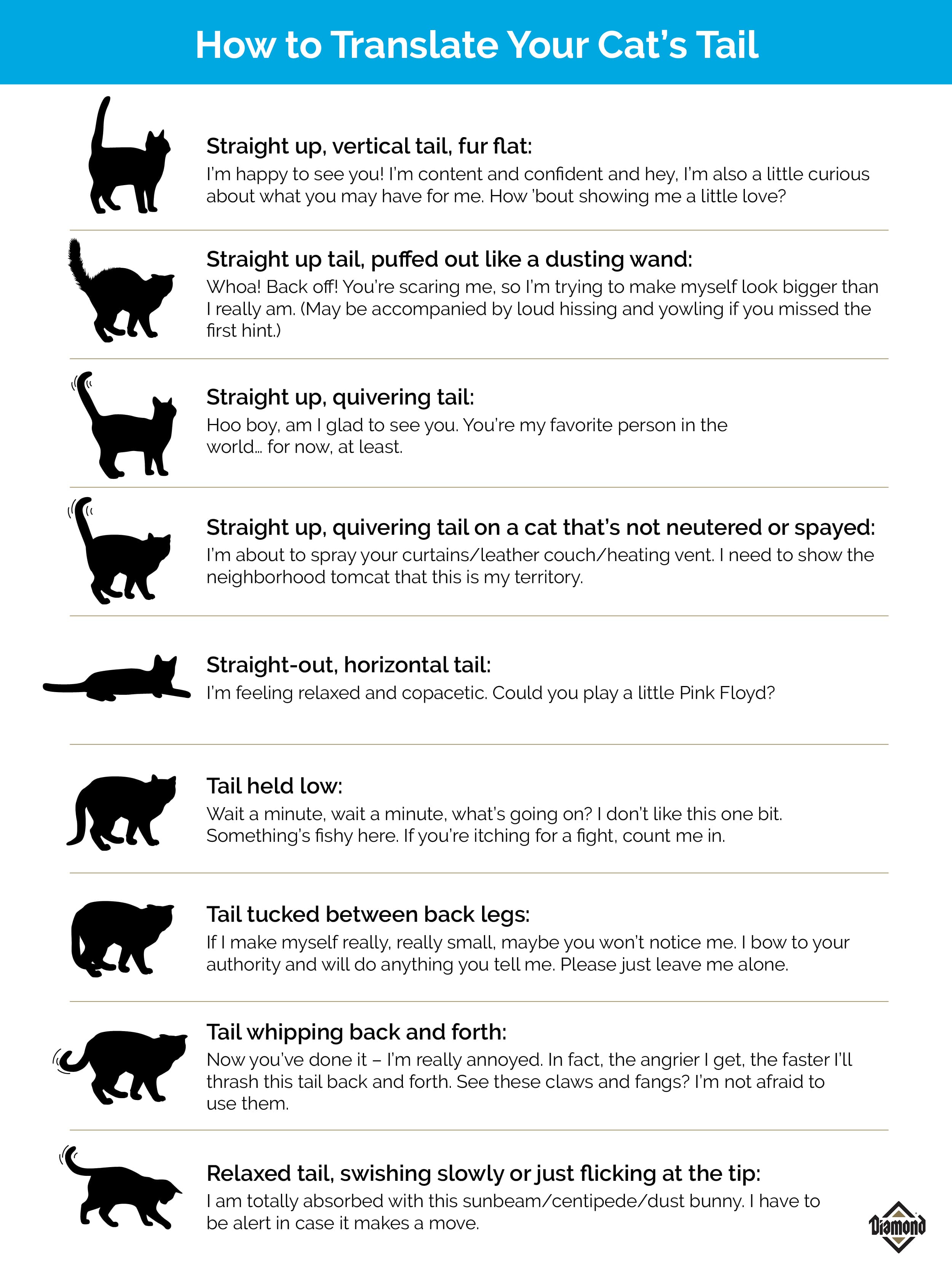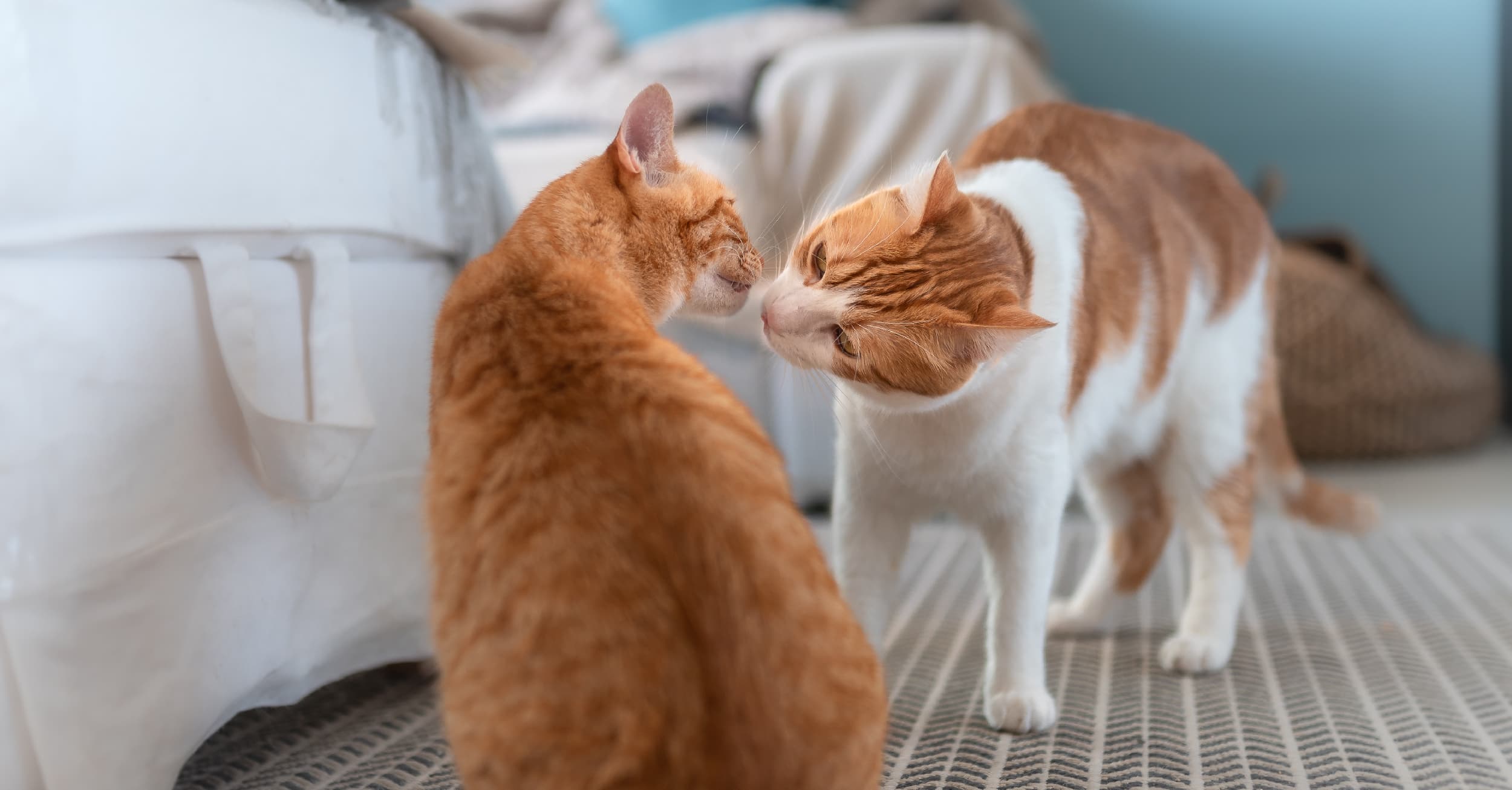We know — your cat is the sweetest lil’ puddy tat ever with their cute little button nose and oh-so-soft “I just want to cuddle you all day” fur. Which is why you may be thinking, “Why not adopt another kitty?” You get double the cuddles and OG cat gets a feline BFF — or do they?
Just because you fall head-over-paws for your new furry friend doesn’t mean that your current cat will feel the same way. So how do you make sure your resident cat (or cats) becomes friends with (or at least tolerates) the new addition? Here are some tips on how to foster those feline friendships and get your expanded family off to a good start.
Leave Excess Baggage at the Door
Before you bring your new kitty home, you want to be sure they’re not bringing unwelcome guests with them. Even if you adopted your cat from a shelter, it’s important to have them checked by your veterinarian to make sure they don’t have any parasites (e.g., fleas, ticks, ear mites) or contagious diseases (e.g., feline leukemia, feline immunodeficiency virus, rabies) that could be passed to your other cats, pets or you. Your veterinarian can also give them a checkup and make sure they’re healthy and ready to play with some new friends. Additionally, spaying or neutering them at this time (if they haven’t been already) will help reduce the risk of urine marking in your house in case one of your cats is territorial (which they naturally are) and decides to publicly claim the couch as their own.
Create a Safe Space for Acclimation
You know how intimidating it can be to walk into an unfamiliar space with people you don’t know — and it’s the same for your new cat. It’s best to let them gradually adapt to their new space and hold off on meeting their new feline friend for a little while. Find a room where they can stay for at least a week by themselves. Provide bedding, food and water bowls and toys, and a litter box that is as far from the food and water as possible.
Place their cat carrier on the floor and let them explore the room on their own. Make sure to keep the door to the room closed but encourage your cats to sniff each other under the door. If your new cat seems a little stressed, you could try adding a feline pheromone diffuser or spray to the room to help them feel calmer.
Nice to Smell You, New Friend
Humans greet each other in many different ways, but smelling each other isn’t usually a common (or acceptable) method. This is a customary way for cats to get know each other, however, because pheromones released by their scent glands are a form of communication for cats. To help your cats get used to each other’s smell, you can rub a towel on each cat and take it to the other cat for them to investigate. You can also switch food bowls and litter boxes.
There’s a Whole New World Out There
Once your new kitty has acclimated to their room-for-one surroundings for about a week and they’ve met their new friend under the door, it’s time for them to explore the rest of the house. Place your current cat in a separate room while your new cat is exploring — it’s not time for them to meet just yet. This will allow your new cat to investigate the sights, smells and sounds of their new home without being distracted and potentially stressed by their new friend.
It’s Finally Time to Meet!
Once your new cat seems to be adjusted to their new home, it’s time for the feline friends to meet “in cat.” One introduction method you can try is to place the new kitty in their pet carrier in the middle of the room. This way your cats can safely see and sniff (and maybe hiss at) each other, without any claws involved. Encourage them to stay calm and give them lots of treats to get the meet and greet off to a positive start. Keep the sessions to a few minutes at a time to start with and then gradually extend their meeting time as they become more comfortable with each other.
Alternatively, if you have a friend or family member to help, you can try playing with the cats separately at opposite ends of the room, while also dishing out yummy treats. Start with five-minute play sessions and then gradually increase the play time and reduce the distance between the cats. If you’ve been successfully doing this for about a week, you can try letting them approach each other.
Each Cat Needs Their Own Space and Essentials
When they finally meet, there’s a chance your cats could be immediate BFFs (best feline friends) but there’s also a (more likely) chance that the first few meetings won’t go so well. It’s important that both cats have an easily accessible escape route that includes a safe place to hide from the other cat. They may not venture out of that place for a while, so make sure they have access to food and water and a litter box close by.
To avoid a feline fracas at dinner, make sure each cat has their own food and water bowls and provide a litter box for each cat, plus a spare one. So, if you have two cats, you need three litter boxes. Put the litter boxes in quiet, low-traffic areas where each cat will have some privacy. Also, make sure you have multiple scratching posts, cat trees, resting places, toys, etc., so that each cat has equal access and you can avoid an “It’s mine!” squabble.
Watch for Signs of Stress
Until you’re sure that your cats are friendly with each other, or at least not likely to get their claws out at the mere sight of each other, it’s best to keep them in separate rooms while you’re away from home. When you are home, make sure you’re keeping an eye on their interactions so you can intervene if necessary. The graphic below can help you recognize signs of stress or potential aggression by understanding your cat’s “tail language.”

If one (or all) of your cats are showing constant signs of stress and aren’t adjusting to their new roommate, ask your veterinarian for advice. Urinating outside the litter box can be one of the first signs of feline stress, and long-term conflict between cats could trigger a feline idiopathic cystitis episode or other health problems.
Introducing your new cat to their new home and new friends slowly, plus using lots of positive reinforcement for all of your cats, will hopefully set them on the right path to becoming friends. It may take a few weeks, so have patience and supervise them carefully. Keep in mind that they may never be besties, but hopefully they will at least tolerate each other’s presence (eventually).
RELATED POST: Guest Column: Nine Tips for Adopting a Rescue Cat







